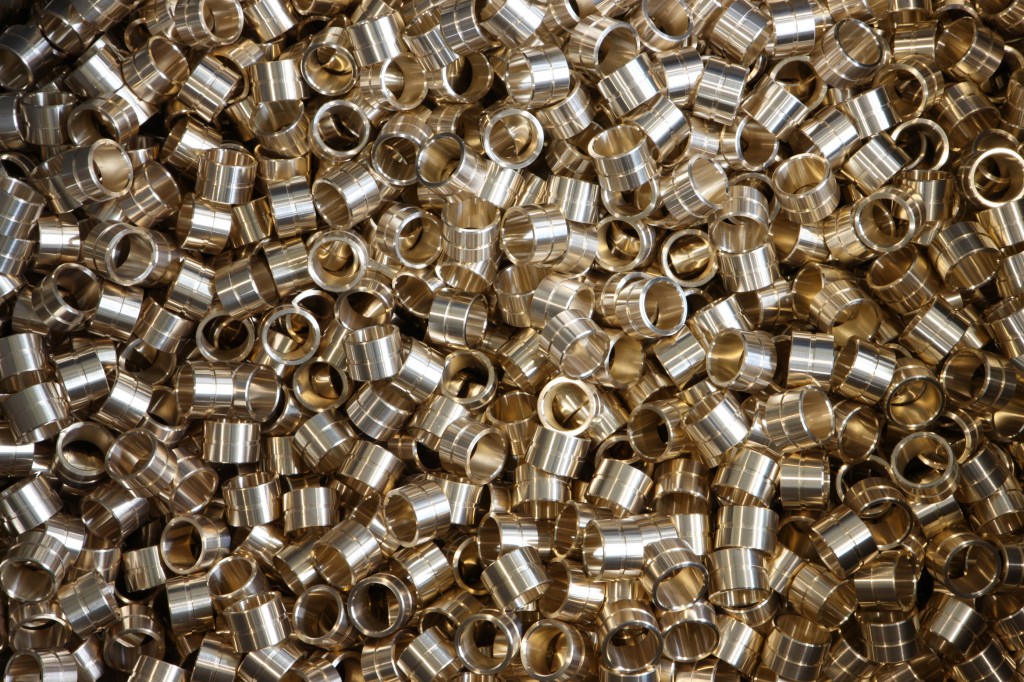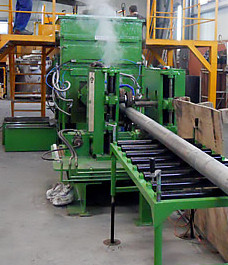Cast Bronze Bushing, the Original Green Product
Green products are those that have less of an impact on the environment than their traditional equivalents. Green products might, typically, be formed or partially formed from recycled components or be manufactured in a more energy-conservative way. Cast Bronze Bushings have been used for various bearing purposes for hundreds of years. But did you know that they are made up of mostly recycled materials?
Bronze is used for bearings largely due to the way copper and lead combine in an alloy. Only a small percentage of lead will actually alloy with copper when they are melted together. As a result the lead forms small pools throughout the composition of the metal. These pools add a form of internal lubrication to the solidified copper alloy, greatly enhancing the metals bearing properties, while not affecting the other physical properties of the alloy. For this reason, bronze alloys of copper, tin, and lead have been the bearing material of choice for many bushings.
Copper makes up a majority of the composition of Bearing Bronze (approx. 83%), as a result the cost of bronze is dictated by the market value of copper. Over the years manufacturers have tried their best to reduce the cost of bronze bushings. One such way is to re-use the metal turnings created during the manufacturing process.
Bronze mills also use these turnings to keep their costs down when casting the semi-finished bar stock. This process of re-using and recycling the metal turnings has worked well for many years. The process works like this:
1. A Bronze Mill will supply a bushing manufacturer with semi-finished bar stock.
2. This bar stock is machined via various lathes and mills and the resulting scrap turnings are saved.
3. The turnings are then sold back to the original mill.
4. The Bronze Mill uses this scrap to cast new bar stock and the cycle repeats itself.
Manufacturers and Mills develop mutually beneficial relationships, where the Manufacturer ensure that the turnings are collected and segregated from other metal turnings and are cleaned and free of containments and coolant. As a result the Mill offers a premium for scrap that they know is pure and free from containments.
This recycling of scrap reduces additional energy use that would result from having to eliminate impurities. Re-melting the turnings consume a lot less energy than what it would take to mine, smelt, and refine the copper, tin, and lead.







